Xiao Kang
FURINA: Free from Unmergeable Router via LINear Aggregation of mixed experts
Sep 18, 2025Abstract:The Mixture of Experts (MoE) paradigm has been successfully integrated into Low-Rank Adaptation (LoRA) for parameter-efficient fine-tuning (PEFT), delivering performance gains with minimal parameter overhead. However, a key limitation of existing MoE-LoRA methods is their reliance on a discrete router, which prevents the integration of the MoE components into the backbone model. To overcome this, we propose FURINA, a novel Free from Unmergeable Router framework based on the LINear Aggregation of experts. FURINA eliminates the router by introducing a Self-Routing mechanism. This is achieved through three core innovations: (1) decoupled learning of the direction and magnitude for LoRA adapters, (2) a shared learnable magnitude vector for consistent activation scaling, and (3) expert selection loss that encourages divergent expert activation. The proposed mechanism leverages the angular similarity between the input and each adapter's directional component to activate experts, which are then scaled by the shared magnitude vector. This design allows the output norm to naturally reflect the importance of each expert, thereby enabling dynamic, router-free routing. The expert selection loss further sharpens this behavior by encouraging sparsity and aligning it with standard MoE activation patterns. We also introduce a shared expert within the MoE-LoRA block that provides stable, foundational knowledge. To the best of our knowledge, FURINA is the first router-free, MoE-enhanced LoRA method that can be fully merged into the backbone model, introducing zero additional inference-time cost or complexity. Extensive experiments demonstrate that FURINA not only significantly outperforms standard LoRA but also matches or surpasses the performance of existing MoE-LoRA methods, while eliminating the extra inference-time overhead of MoE.
Multi-fidelity prediction of fluid flow and temperature field based on transfer learning using Fourier Neural Operator
Apr 14, 2023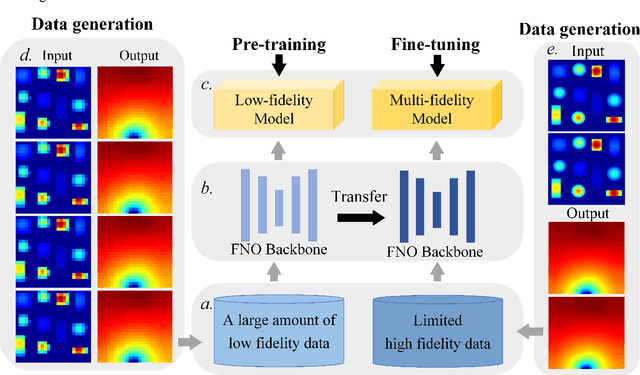
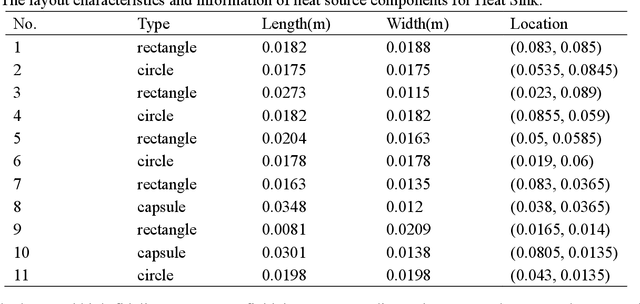
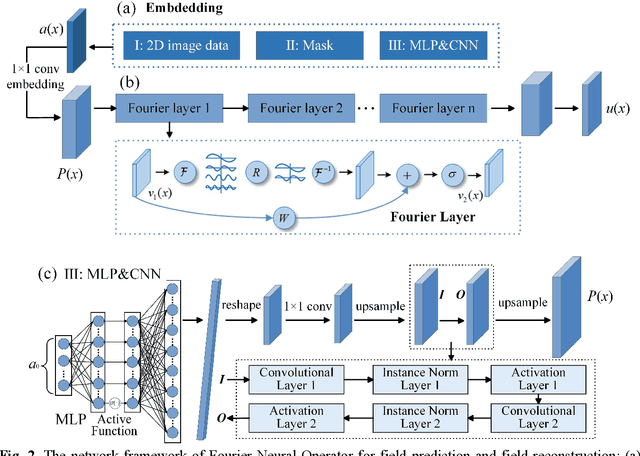

Abstract:Data-driven prediction of fluid flow and temperature distribution in marine and aerospace engineering has received extensive research and demonstrated its potential in real-time prediction recently. However, usually large amounts of high-fidelity data are required to describe and accurately predict the complex physical information, while in reality, only limited high-fidelity data is available due to the high experiment/computational cost. Therefore, this work proposes a novel multi-fidelity learning method based on the Fourier Neural Operator by jointing abundant low-fidelity data and limited high-fidelity data under transfer learning paradigm. First, as a resolution-invariant operator, the Fourier Neural Operator is first and gainfully applied to integrate multi-fidelity data directly, which can utilize the scarce high-fidelity data and abundant low-fidelity data simultaneously. Then, the transfer learning framework is developed for the current task by extracting the rich low-fidelity data knowledge to assist high-fidelity modeling training, to further improve data-driven prediction accuracy. Finally, three typical fluid and temperature prediction problems are chosen to validate the accuracy of the proposed multi-fidelity model. The results demonstrate that our proposed method has high effectiveness when compared with other high-fidelity models, and has the high modeling accuracy of 99% for all the selected physical field problems. Significantly, the proposed multi-fidelity learning method has the potential of a simple structure with high precision, which can provide a reference for the construction of the subsequent model.
Attention Model Enhanced Network for Classification of Breast Cancer Image
Oct 07, 2020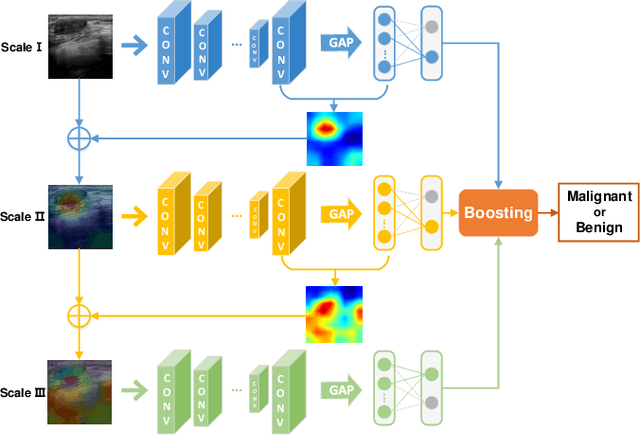


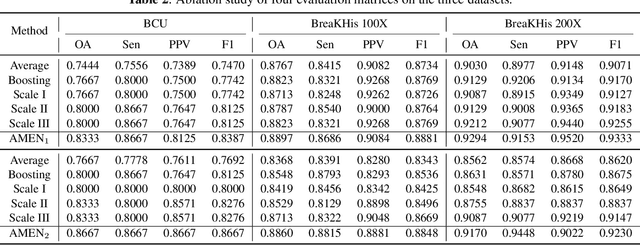
Abstract:Breast cancer classification remains a challenging task due to inter-class ambiguity and intra-class variability. Existing deep learning-based methods try to confront this challenge by utilizing complex nonlinear projections. However, these methods typically extract global features from entire images, neglecting the fact that the subtle detail information can be crucial in extracting discriminative features. In this study, we propose a novel method named Attention Model Enhanced Network (AMEN), which is formulated in a multi-branch fashion with pixel-wised attention model and classification submodular. Specifically, the feature learning part in AMEN can generate pixel-wised attention map, while the classification submodular are utilized to classify the samples. To focus more on subtle detail information, the sample image is enhanced by the pixel-wised attention map generated from former branch. Furthermore, boosting strategy are adopted to fuse classification results from different branches for better performance. Experiments conducted on three benchmark datasets demonstrate the superiority of the proposed method under various scenarios.
Learning Binary Semantic Embedding for Histology Image Classification and Retrieval
Oct 07, 2020


Abstract:With the development of medical imaging technology and machine learning, computer-assisted diagnosis which can provide impressive reference to pathologists, attracts extensive research interests. The exponential growth of medical images and uninterpretability of traditional classification models have hindered the applications of computer-assisted diagnosis. To address these issues, we propose a novel method for Learning Binary Semantic Embedding (LBSE). Based on the efficient and effective embedding, classification and retrieval are performed to provide interpretable computer-assisted diagnosis for histology images. Furthermore, double supervision, bit uncorrelation and balance constraint, asymmetric strategy and discrete optimization are seamlessly integrated in the proposed method for learning binary embedding. Experiments conducted on three benchmark datasets validate the superiority of LBSE under various scenarios.
 Add to Chrome
Add to Chrome Add to Firefox
Add to Firefox Add to Edge
Add to Edge